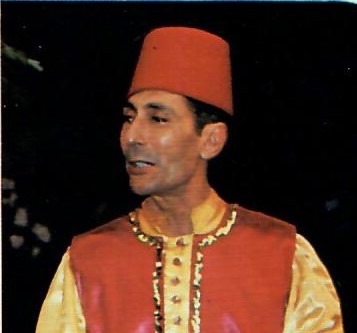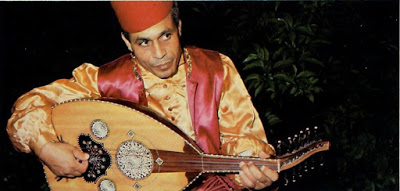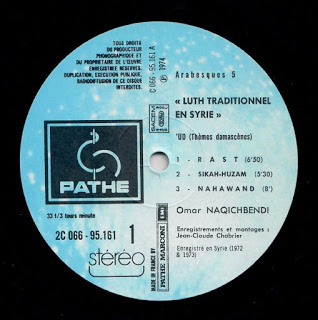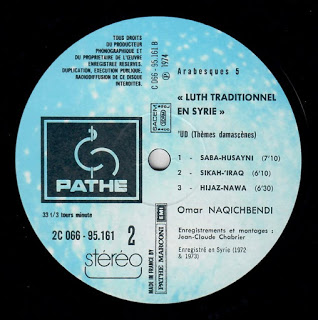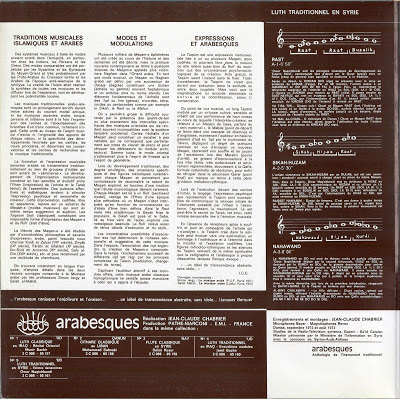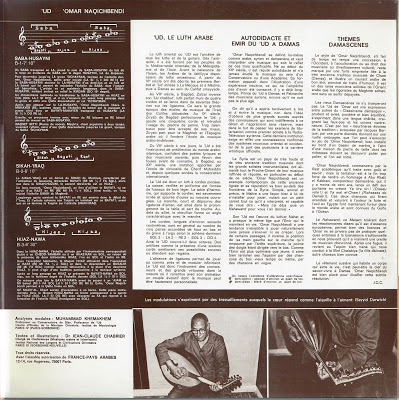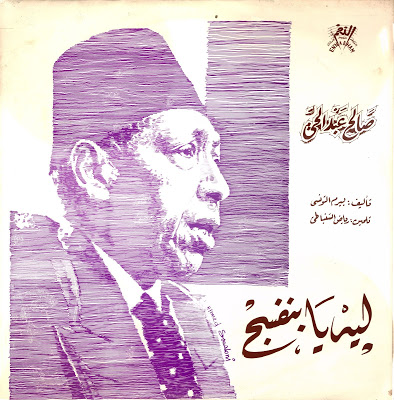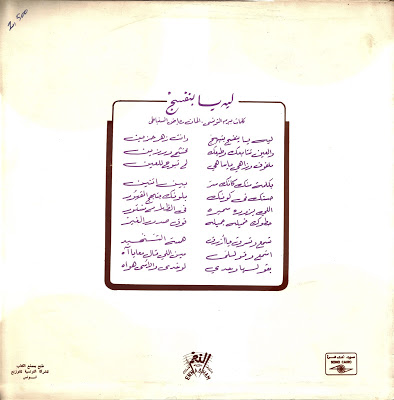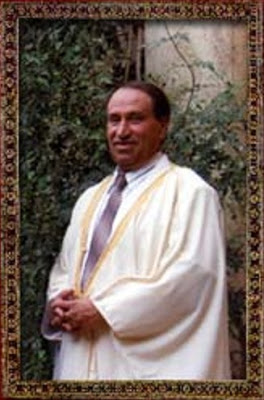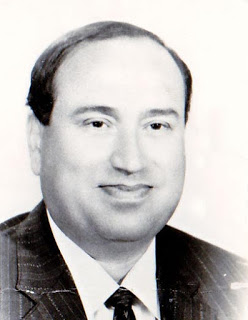Salah Abd al-Hayy was the last outstanding Egyptian singer of classical
Arabic music as it was performed around the turn of the century by great singers
like Yūsuf al-Manyalāwī (1847-1911), his uncle ‘Abd al-Ḥayy Ḥilmī (1857-1912) and Sayyid
al-Ṣaftī (1875-1939). During his lifetime Egytian music went through quite drastic changes, personified by the famous Om Kalthoum. Salah Abd al-Hayy seems to have been the only singer who refused the huge orchestras of the time and stuck to the small classical arab ensemble, the Takht, consisting of 'Ud, Qanun, Ney, violin, and one or two percussionists.
He also stuck to the classic Wasla (Maqam suite) consisting of a metrical introduction, a Taqsim (non-metrical instrumental improvisation on 'Ud or Qanun), a Layali (a great non-metrical vocal improvisation supported by an 'Ud or Qanun) and some metrical compositions at the end.
Unfortunately this music seems hardly to exist since after his death anymore in Egypt, except in a very marginal way. See for example the beautiful piece by Ibrahim El-Haggar
here. We will post a broadcast by him in the future.
Here we present an old LP - I have no idea when it was released: maybe in the 1950s or 1960s - with one of his well-known compositions in the Wasla format. The piece covers both sides.
"Born in Cairo to a family of musicians (his uncle was ̕Abd al-Hay Hilmî),
he was trained with the Sahbageyya groups and then with the Muhammad ̕ Umar and
̕Ali al-Rashidi groups. He started his career with his uncle’s repertoire. He
reached his glory in the middle of the 1920s. His powerful and moving voice made
him the last brilliant representative of the Khedivial aesthetics in its
improvising dimension. An ardent defender of the takht, he was the first singer
broadcasted on national radio in May 1934 without, however, renewing his
repertoire."
Around 15 or 20 years ago there existed some (I think 4) CDs by him, manufactured by the Saudi Arabian CD company Sidi. Nowadays one can't find them anymore anywhere.
But in the internet one can find many recordings by him: on all the downloading and streaming sites (Amazon, Deezer, Qobuz (flac format) etc.) and also on YouTube, especially if one puts in his name with arabic letters: صالح عبد الحي
About the artist see:
A few years ago a wonderful set of four CDs by his
uncle Abd Al-Hayy Hilmi was published. It can be obtained from:
info@raga-maqam-dastgah.com.
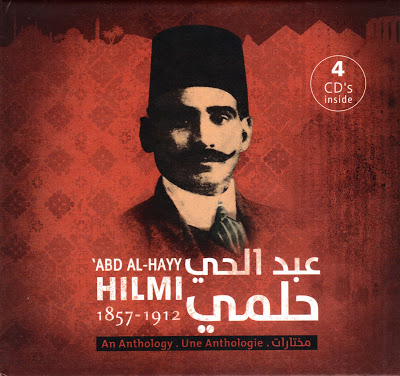
Abd Al-Hayy Hilmi (1857-1912) (Vocal) – An Anthology – Une Anthologie, Set
of 4 CDs containing 45 recordings + 1 booklet in English, French and
Arabic,
CD 1: Odeon 1903-1910 - Dawr - 'ahd el-ekhewwa (7:45), Dawr - gaddedi ya
nafsi hazzek (7:15), Dawr - sallemte ruhak (6:56), Muwashshah - ya nahif
al-qawam (3:46), Muwashshah - waghak mushriq (3:50), Taqtuqa - 'amara ya'ammura
(4:05), Dawr - el-hobbe sabbahni'adam (7:35), Dawr - enta farid fel-hosn (7:00),
Dawr - el-hosn ana'eshe'to (10:52), Dawr - fe maglis el-'ons el-hani (6:07),
Dawr - bustan gamalak (9:37).
CD 2: Zonophone / Early Gramophone 1906-1909 - Dawr - el-bolbol gani
(9:37), Dawr - ahin en-nafs (15:52), Dawr - ana 'a'sha'fi zamani (9:36), Dawr -
el-warde fo' wagnat bahiyy el-gamal (12:49), Muwashshah - atani zamani (10:26),
Dawr - la ya en (9:01), Mawwal - ya mufrad el-ghid (4:29), Qasida 'ala l-wahda -
fa-ya muhgati dhubi gawan (4:26).
CD 3: Late Gramophone (1909-1910) - Taqsim layali, taqtuqa - 'idil-yamin
(9:04), Taqtuqa - ya nakhleten fel-'alali (4:38), Taqsim layali, mawwal - ya
hadiya l-'is (8:44), Muwashshah - nahat fa-'agabtuha (4:40), Muwashshah - hati
ayyuha s-saqi (4:05), Qasida 'ala l-wahda - a-saqiyaya 'a-khamrun fi ku'usikuma
(3:55), Taqsim layali, mawwal - la tehsibu inn el-be'ad (4:04), Dawr - el''albe
dab es'efini (8:07), Taqsim layali, mawwal - sahi l-gefun (4:18), Mawwal - amr
el-gharam (4:03), Taqsim layali, qasida mursala - lla muhayyaka nuru l-badr
(8:16), Dawr - min habbak 'awla be-'urbak (6:19), Qasida 'ala l-wahda - a-la fi
sabili l-lah (6:26).
CD 4: Baidaphone 1911-1912 - Qasida 'ala-wahda - shakawtu fa-qalat (4:14),
Qasida mursala - a-lasta wa'adtani (4:14), Qasida 'ala l-wahda - araka 'asiyya
d-dam'i (8:09), Mawwal - sabah es-sabah (4:07), Qasida mursala - 'umri 'alayka
tashawwuqan (3:47), Dawr - ma-ahebbe gherak (10:45), Mawwal - ya di 'l-gamal
wed-dalal (3:18), Muwashshah - ya laylu 'inna l-habiba wafa & muwashshah -
gusnu banin gabinuhu (7:01), Du'a - ye'ish khedewi masr (7:18), Dawr - ya masr'
unsek 'al (4:00), Muwashshah - ya akhal el-'en (4:13), Qasida mursala - tih
dalalan (4:01), Dawr - maliki ana 'abdak (7:20), AMAR - Foundation for Arab
Music Archiving and Research
”Abd al-Hayy Hilmi, a talismanic artist in a non-conformist style of the
Arab intellectual and cultural renaissance (the Nahda). At the turn of the 20th
century, he was the king of Tarab (music). He was maverick in life, just like
the way he sang. His personal versions of the songs that were the most performed
are surprisingly outspoken and free, illustrated by immediate compositional
improvisation. We present in this box set of 4 Cds, including 45 recordings
featuring all the styles Hilmi sang in and which further represent different
periods covering all the facets of this great singer’s artistry.
Abd al-Hay Hilmî, a seductive dandy, was the spoiled child of Egyptian high
society at the turn of the century. He was noted for his odd manners; he would
leave a concert he was hired for if he failed to notice a pleasant looking face,
be it male or female, in the audience, and preferred to sing for handsome
strangers. An obsessive drinker, he would also use various drugs to reach the
state of saltana necessary to unleash his extemporizing creativity. He ended up
worn by his excesses, which caused him an angina pectoris, and he died whilst
drunken in Alexandria after a feast of sea turtle.
A whimsical character in his life, as well as in his art, he was often
summing up the introduction and livening up the composed thread of the melody.
He would neglect entire sections so as to privilege one verse, one standstill in
a particular modal color to which he added a tragic and hallucinated touch,
displaying a wide range of virtuosic effects expressing emotions, shifting from
long melodic phrases to a jerky staccato, interrupting the instruments with
another dramatic piece of embroidery over the heady main theme. A self-taught
artist in learned tradition, Abd al-Hay Hilmî insisted on ignoring the rules.
His well-known lack of respect for rhythm and composition made him an easy
target for harsh criticism from rigorists who were subjugated by Western
patterns with their sanctification of the composer’s role. His passion naturally
finds its best expression in mawawil, where non metrical improvisation is the
only rule. In this field, he remains unmatchable.
A successful record-selling artist, he was first hired by Zonophone in 1906
cutting his best discs ever inspite of poor technical quality. He then
collaborated with the record companies installed in Egypt until his death, often
recording the same works many times a year for the British Gramophone, Odeon and
Baidaphon. A prodigal sybarite, he would receive from the companies important
amounts of money, squander it and then be forced to repay his debts in terms of
recordings. This is why, once, he mischievously added at the end of a qasîda
rimed curses against the Gramophone Company, that went unnoticed.”
